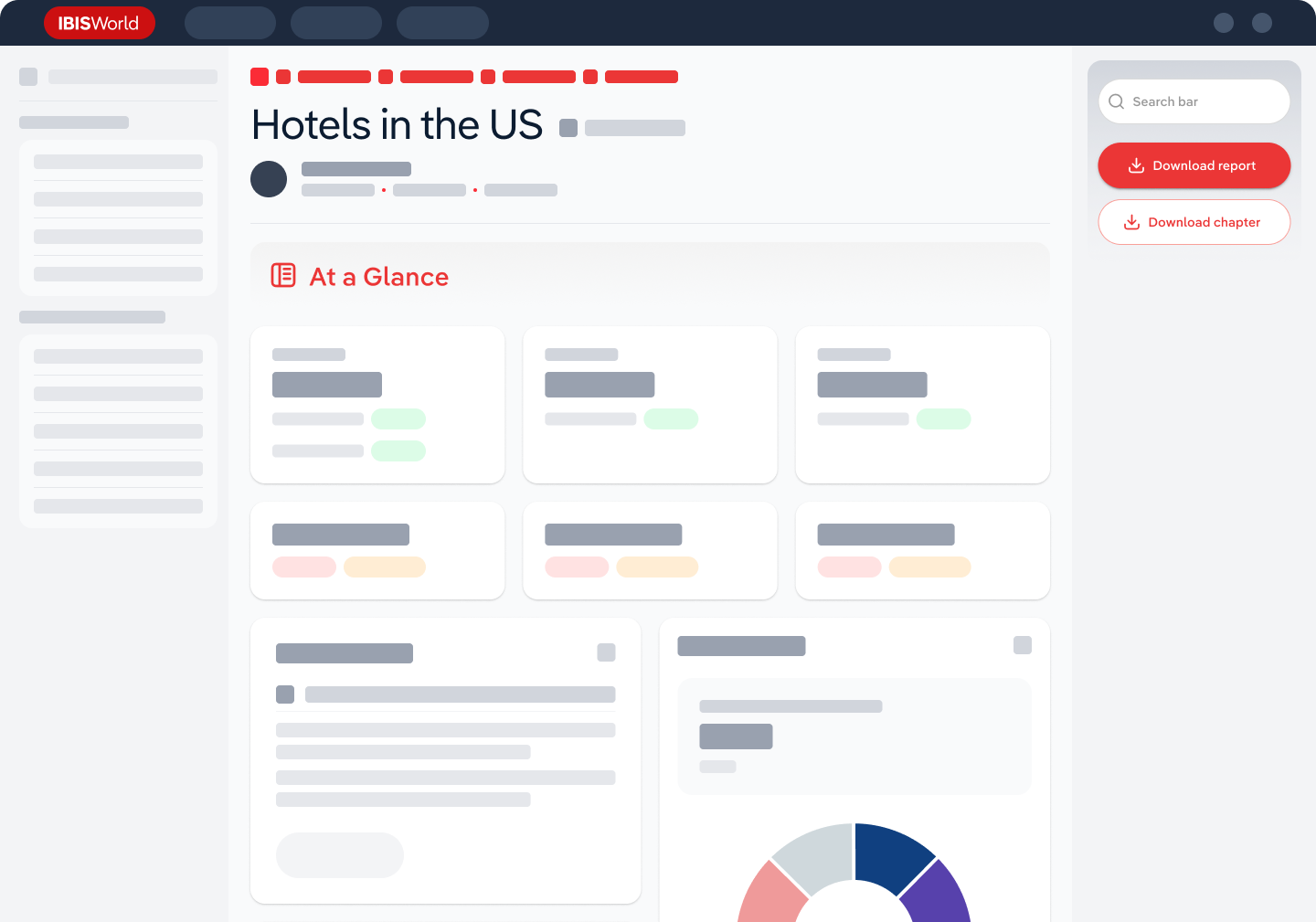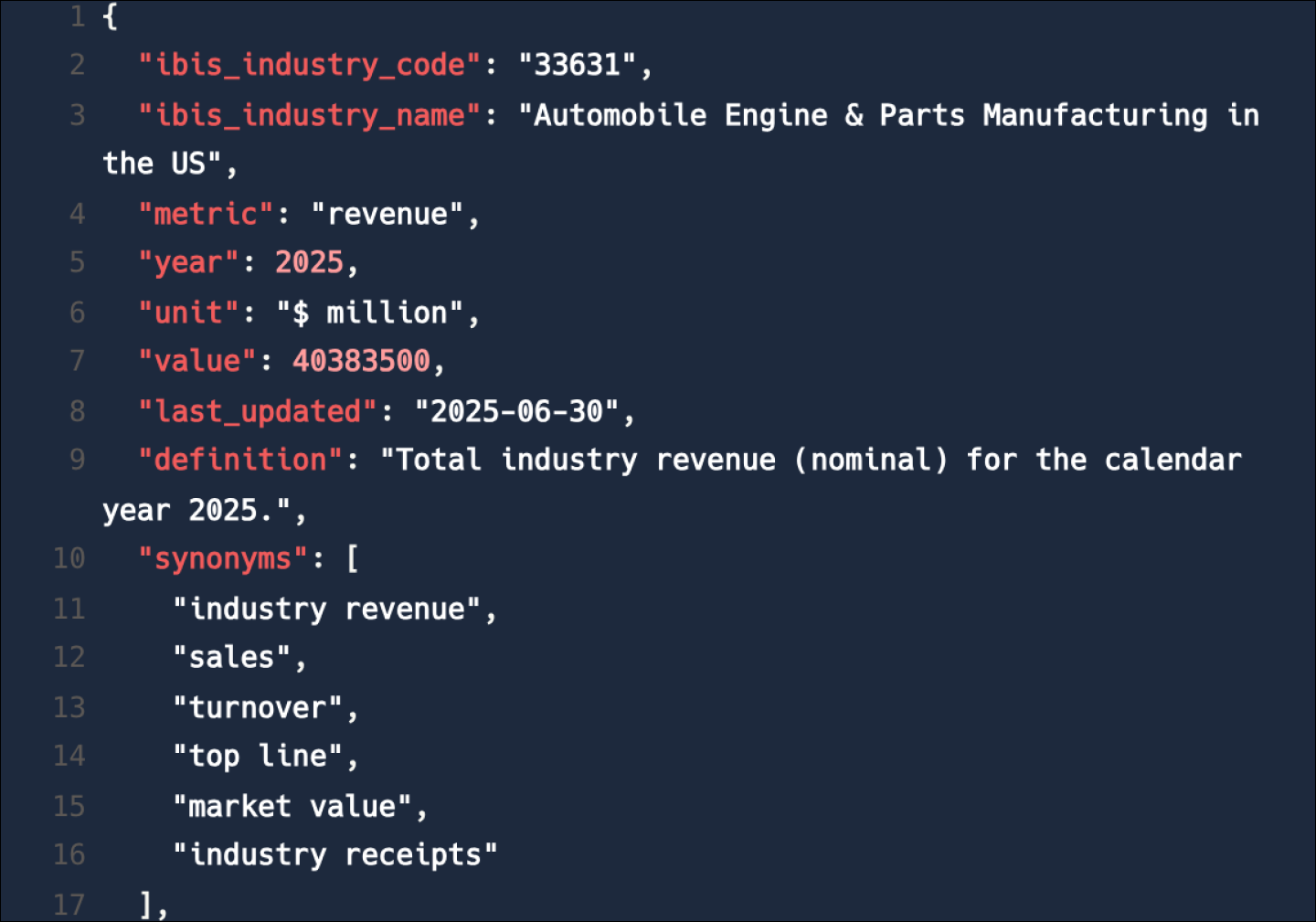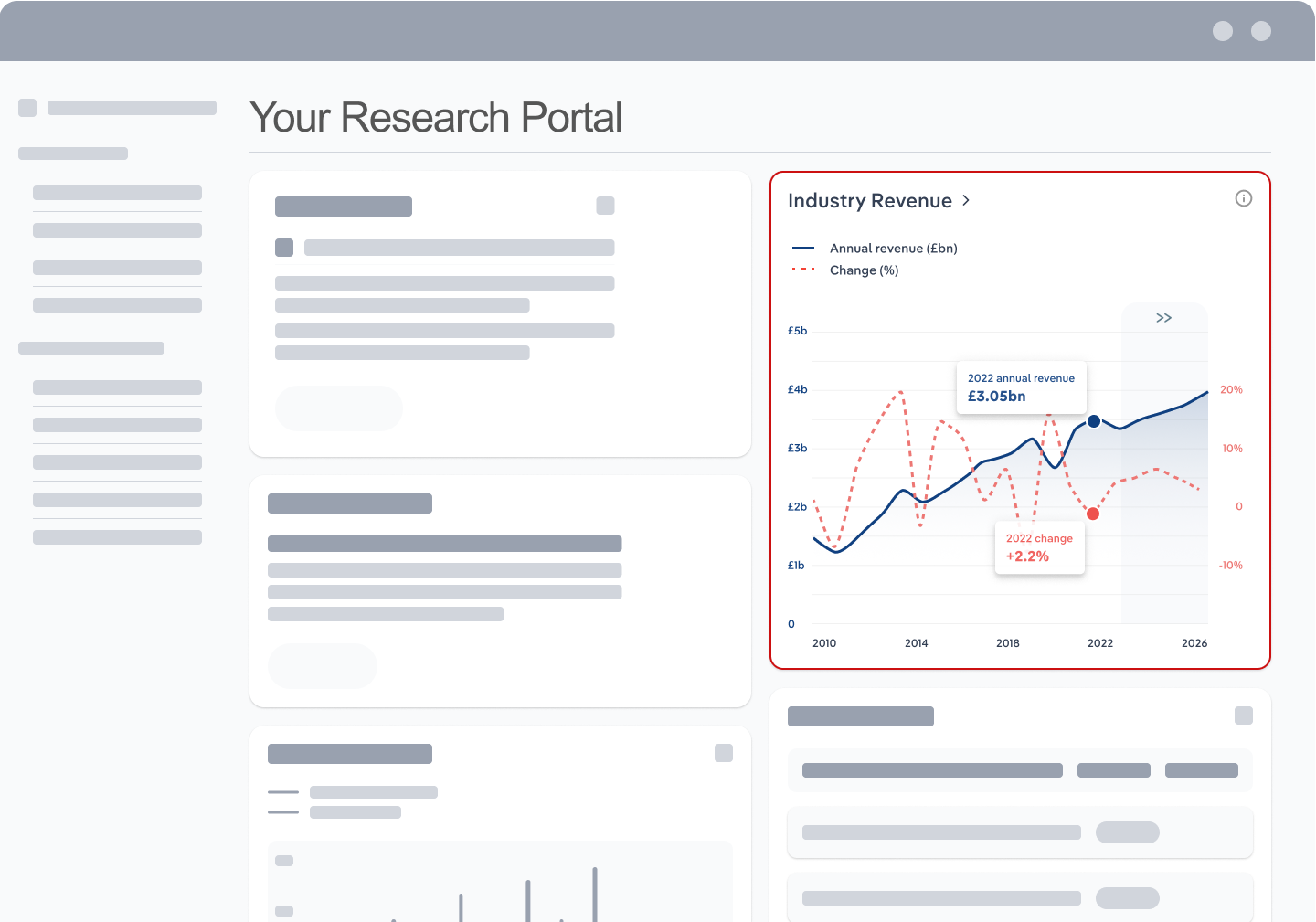Industry Statistics and Trends
Market size and recent performance (2015-2030)
Industry revenue has declined at a CAGR of 1.8 % over the past five years, to reach an estimated $15.6bn in 2025.
Trends and Insights
Economic uncertainty bolsters gold and silver prices
- The prices of gold and silver are determined by global commodities markets and fluctuate along with macroeconomic conditions. This largely leaves gold and silver miners as price receivers, with industry revenue rising and falling along with prices. With gold mining operations dwarfing silver mining operations in Canada, this industry's fortunes are largely determined by the price of gold.
- Additional trends and insights available with purchase
Industry outlook (2025-2030)
Market size is projected to decline over the next five years.
Trends and Insights
Larger macroeconomic trends impact commodity prices
- Gold and silver prices are set to continue growing as economic uncertainty is likely to continue into the coming years. A potentially escalating trade war between the US and the rest of the world, including Canada, as well as geopolitical conflicts like the war in Ukraine will continue to be destabilizing forces in the coming years.
Biggest companies in the Gold & Silver Ore Mining in Canada
| Company | Market Share (%)
2025 | Revenue ($m)
2025 | Profit ($m)
2025 | Profit Margin (%)
2025 |
|---|---|---|---|---|
Agnico Eagle | 9,962.2 | 3,029.8 | 30.4 | |
Newmont | 3,561.3 | 754.2 | 21.2 | |
Barrick | 679.3 | 213.5 | 31.4 |
To view the market share and analysis for all 3 top companies in this industry, view purchase options.
Products & Services Segmentation
Industry revenue is measured across several distinct product and services lines, including Gold ore, powder, concentrates and unwrought forms, Silver ore, powder, concentrates and unwrought forms and Other. Gold ore, powder, concentrates and unwrought forms is the largest segment of the Gold & Silver Ore Mining in Canada.
Trends and Insights
Canada is a gold mine
- Gold is a metal with various uses in finance, medicine, manufacturing and is also highly esteemed as a luxury commodity. Gold production is sold to mints and dealers, who refine it into bullion products for sale on global financial markets.
- More insights available in the full report
Table of Contents
About this industry
Industry definition
The Gold and Silver Ore Mining industry in Canada mines and prepares ores valued primarily for their gold or silver content. Some companies process ore into concentrate or bullion on-site, while others maintain refining facilities abroad. Companies in this industry can also store and delay the sale of their output to speculate commodity price fluctuations.
What's included in this industry?
Products and services covered in the Gold & Silver Ore Mining industry in Canada include Gold ore mining, Silver ore mining, Gold ore beneficiation and Silver ore beneficiation.Companies
Companies covered in the Gold & Silver Ore Mining industry in Canada include Agnico Eagle, Newmont and Barrick.Purchase this report to view all 3 major companies in this industry.
Related Terms
Related terms covered in the Gold & Silver Ore Mining industry in Canada include concentrate, bullion, dore and troy ounce.Industry Code
NAICS 212220 - Gold & Silver Ore Mining in Canada
Performance
Get an indication of the industry's health through historical, current and forward-looking trends in the performance indicators that make or break businesses.
Analyst insights
Gold prices have continued to surge in 2025. Economic uncertainty and geopolitical tensions have driven investment in gold, a traditional safe-haven asset. Investors are seek...
In this chapter (4)
- Current Performance
- Outlook
- Volatility
- Life Cycle
Key metrics
- Annual Revenue, Recent Growth, Forecast, Revenue Volatility
- Number of Employees, Recent Growth, Forecast, Employees per Business, Revenue per Employee
- Number of Businesses, Recent Growth, Forecast, Employees per Business, Revenue per Business
- Total Profit, Profit Margin, Profit per Business
Charts
- Revenue, including historical (2015-2024) and forecast (2025-2030)
- Employees, including historical (2015-2024) and forecast (2025-2030)
- Businesses, including historical (2015-2024) and forecast (2025-2030)
- Profit, including historical (2015-2025)
- Industry Volatility vs. Revenue Growth
- Industry Life Cycle
Detailed analysis
- Trends in supply, demand and current events that are driving current industry performance
- Expected trends, economic factors and ongoing events that drive the industry's outlook
- Key success factors for businesses to overcome volatility
- How contribution to GDP, industry saturation, innovation, consolidation, and technology and systems influence the industry's life cycle phase.
Products and Markets
Learn about an industry's products and services, markets and trends in international trade.
Analyst insight
Investors flock to gold for stability. Individual and institutional investors are snapping up gold to hedge against economic uncertainty. Gold’s counter-cyclical nature makes...
In this chapter
- Products & Services
- Major Markets
- International Trade
Key metrics
- Largest market segment and value in 2025
- Product innovation level
- Total imports, level and trend
- Total exports, level and trend
- Trade Balance
Charts
- Products & services segmentation in 2025
- Major market segmentation in 2025
- International trade, including imports by country and exports by country
Detailed analysis
- Trends impacting the recent performance of the industry's various segments
- Innovations in the industry's product or service offering, specialization or delivery method
- Key factors that successful businesses consider in their offerings
- Buying segments and key trends influencing demand for industry products and services
- Recent trends in import and export volumes, country of origin or destination, and expected future trends
Geographic Breakdown
Discover where business activity is most concentrated in an industry and the factors driving these trends to find opportunities and conduct regional benchmarking.
Analyst insights
Ontario boasts some of Canada's highest gold production outputs. Its climate and large mines, like the Hemlo and Musselwhite, contribute to nearly half of the nation's gold p...
In this chapter (1)
- Business Locations
Charts
- Share of revenue, establishment, wages and employment in each province
- Share of population compared to establishments in each region in 2025
Tables
- Number and share of establishments in each province in 2025
- Number and share of revenue each province accounts for in 2025
- Number and share of wages each province accounts for in 2025
- Number and share of employees in each province in 2025
Detailed analysis
- Geographic spread of the industry across North America, and trends associated with changes in the business landscape
- Key success factors for businesses to use location to their advantage
Competitive Forces
Get data and insights on what's driving competition in an industry and the challenges industry operators and new entrants may face, with analysis built around Porter's Five Forces framework.
Analyst insights
Technology is leveling the playing field. Advanced mining techniques allow medium-sized companies to compete with industry giants. Though pricey initially, the investment in ...
In this chapter (4)
- Concentration
- Barriers to Entry
- Substitutes
- Buyer & Supplier Analysis
Key metrics
- Industry concentration level
- Industry competition level and trend
- Barriers to entry level and trend
- Substitutes level and trend
- Buyer power level and trend
- Supplier power level and trend
Charts
- Market share concentration among the top 4 suppliers from 2020-2025
- Supply chain including upstream supplying industries and downstream buying industries, flow chart
Detailed analysis
- Factors impacting the industry’s level of concentration, such as business distribution, new entrants, or merger and acquisition activity.
- Key success factors for businesses to manage the competitive environment of the industry.
- Challenges that potential industry entrants face such as legal, start-up costs, differentiation, labor/capital intensity and capital expenses.
- Key success factors for potential entrants to overcome barriers to entry.
- Competitive threats from potential substitutes for the industry’s own products and services.
- Key success factors for how successful businesses can compete with substitutes.
- Advantages that buyers have to keep favorable purchasing conditions.
- Advantages that suppliers have to maintain favorable selling conditions.
- Key success factors for how businesses can navigate buyer and supplier power.
Companies
Learn about the performance of the top companies in the industry.
Analyst insights
In November 2022, Agnico Eagle Mines released its first climate action report. The company is showing investors its commitment to reducing carbon emissions. The report outlin...
In this chapter
- Market Share Concentration
- Companies
- Company Spotlights
Charts
- Industry market share by company in 2021 through 2025
- Major companies in the industry, including market share, revenue, profit and profit margin in 2025
- Overview of Agnico Eagle's performance by revenue, market share and profit margin from 2019 through 2025
- Overview of Newmont's performance by revenue, market share and profit margin from 2019 through 2025
- Overview of Barrick's performance by revenue, market share and profit margin from 2019 through 2025
Detailed analysis
- Description and key data for Agnico Eagle, and factors influencing its performance in the industry
- Description and key data for Newmont, and factors influencing its performance in the industry
- Description and key data for Barrick, and factors influencing its performance in the industry
External Environment
Understand the demographic, economic and regulatory factors that shape how businesses in an industry perform.
Analyst insights
Mining companies benefit from favourable tax regimes. These policies let companies recoup their invested capital before they pay taxes. This incentivizes investment but can d...
In this chapter
- External Drivers
- Regulation & Policy
- Assistance
Key metrics
- Regulation & policy level and trend
- Assistance level and trend
Charts
- Regulation & Policy historical data and forecast (2015-2030)
- Assistance historical data and forecast (2015-2030)
Detailed analysis
- Demographic and macroeconomic factors influencing the industry, including Regulation & Policy and Assistance
- Major types of regulations, regulatory bodies, industry standards or specific regulations impacting requirements for industry operators
- Key governmental and non-governmental groups or policies that may provide some relief for industry operators.
Financial Benchmarks
View average costs for industry operators and compare financial data against an industry's financial benchmarks over time.
Analyst insights
Depreciation costs keep miners on their toes. The constant need to replace heavy machinery for digging, drilling, and crushing eats away at the bottom line.
In this chapter
- Cost Structure
- Financial Ratios
- Key Ratios
Key metrics
- Profit margin, and how it compares to the sector-wide margin
- Average wages, and how it compares to the sector-wide average wage
- Largest cost component as a percentage of revenue
- Industry average ratios for days' receivables, industry coverage and debt-to-net-worth ratio
Charts
- Average industry operating costs as a share of revenue, including purchases, wages, depreciation, utilities, rent, other costs and profit in 2025
- Average sector operating costs as a share of revenue, including purchases, wages, depreciation, utilities, rent, other costs and profit in 2025
- Investment vs. share of economy
Data tables
- Liquidity Ratios (2018-2023)
- Coverage Ratios (2018-2023)
- Leverage Ratios (2018-2023)
- Operating Ratios (2018-2023)
- Assets (2018-2023)
- Liabilities (2018-2023)
- Cash Flow & Debt Service Ratios (2015-2030)
- Revenue per Employee (2015-2030)
- Revenue per Enterprise (2015-2030)
- Employees per Establishment (2015-2030)
- Employees per Enterprise (2015-2030)
- Average Wage (2015-2030)
- Wages/Revenue (2015-2030)
- Establishments per Enterprise (2015-2030)
- IVA/Revenue (2015-2030)
- Imports/Demand (2015-2030)
- Exports/Revenue (2015-2030)
Detailed analysis
- Trends in the cost component for industry operators and their impact on industry costs and profitability
Key Statistics
Industry Data
Data Tables
Including values and annual change:
- Revenue (2015-2030)
- IVA (2015-2030)
- Establishments (2015-2030)
- Enterprises (2015-2030)
- Employment (2015-2030)
- Exports (2015-2030)
- Imports (2015-2030)
- Wages (2015-2030)
Top Questions Answered
Unlock comprehensive answers and precise data upon purchase. View purchase options.
What is the market size of the Gold & Silver Ore Mining industry in Canada in 2025?
The market size of the Gold & Silver Ore Mining industry in Canada is $15.6bn in 2025.
How many businesses are there in the Gold & Silver Ore Mining industry in Canada in 2025?
There are 232 businesses in the Gold & Silver Ore Mining industry in Canada, which has grown at a CAGR of 2.7 % between 2020 and 2025.
How may import tariffs affect the Gold & Silver Ore Mining industry in Canada?
The Gold & Silver Ore Mining industry in Canada is likely to be impacted by import tariffs with imports accounting for a moderate share of industry revenue.
How may export tariffs affect the Gold & Silver Ore Mining industry in Canada?
The Gold & Silver Ore Mining industry in Canada is likely to be significantly impacted by export tariffs with exports accounting for a high share of industry revenue.
Has the Gold & Silver Ore Mining industry in Canada grown or declined over the past 5 years?
The market size of the Gold & Silver Ore Mining industry in Canada has been declining at a CAGR of 1.8 % between 2020 and 2025.
What is the forecast growth of the Gold & Silver Ore Mining industry in Canada over the next 5 years?
Over the next five years, the Gold & Silver Ore Mining industry in Canada is expected to decline.
What are the biggest companies in the Gold & Silver Ore Mining industry in Canada?
The biggest companies operating in the Gold & Silver Ore Mining industry in Canada are Agnico Eagle, Newmont and Barrick
What does the Gold & Silver Ore Mining industry in Canada include?
Gold ore mining and Silver ore mining are part of the Gold & Silver Ore Mining industry in Canada.
Which companies have the highest market share in the Gold & Silver Ore Mining industry in Canada?
The company holding the most market share in the Gold & Silver Ore Mining industry in Canada is Agnico Eagle.
How competitive is the Gold & Silver Ore Mining industry in Canada?
The level of competition is high and steady in the Gold & Silver Ore Mining industry in Canada.
Methodology
How are IBISWorld reports created?
IBISWorld has been a leading provider of trusted industry research for over 50 years to the most successful companies worldwide. With offices in Australia, the United States, the United Kingdom, Germany and China, we are proud to have local teams of analysts that conduct research, data analysis and forecasting to produce data-driven industry reports.
Our analysts start with official, verified and publicly available sources of data to build the most accurate picture of each industry. Analysts then leverage their expertise and knowledge of the local markets to synthesize trends into digestible content for IBISWorld readers. Finally, each report is reviewed by one of IBISWorld’s editors, who provide quality assurance to ensure accuracy and readability.
IBISWorld relies on human-verified data and human-written analysis to compile each standard industry report. We do not use generative AI tools to write insights, although members can choose to leverage AI-based tools within the platform to generate additional analysis formats.
What data sources do IBISWorld analysts use?
Each industry report incorporates data and research from government databases, industry-specific sources, industry contacts, and our own proprietary database of statistics and analysis to provide balanced, independent and accurate insights.
Key data sources in Canada include:
- Statistics Canada
- Industry Canada
- Canadian Business Patterns
Analysts also use industry specific sources to complement catch-all sources, although their perspective may focus on a particular organization or representative body, rather than a clear overview of all industry operations. However, when balanced against other perspectives, industry-specific sources provide insights into industry trends.
These sources include:
- Industry and trade associations
- Industry federations or regulators
- Major industry players annual or quarterly filings
Finally, IBISWorld’s global data scientists maintain a proprietary database of macroeconomic and demand drivers, which our analysts use to help inform industry data and trends. They also maintain a database of statistics and analysis on thousands of industries, which has been built over our more than 50-year history and offers comprehensive insights into long-term trends.
How does IBISWorld forecast its data?
IBISWorld’s analysts and data scientists use the sources above to create forecasts for our proprietary datasets and industry statistics. Depending on the dataset, they may use regression analysis, multivariate analysis, time-series analysis or exponential smoothing techniques to project future data for the industry or driver. Additionally, analysts will leverage their local knowledge of industry operating and regulatory conditions to impart their best judgment on the forecast model.
IBISWorld prides itself on being a trusted, independent source of data, with over 50 years of experience building and maintaining rich datasets and forecasting tools. We are proud to be the keystone source of industry information for thousands of companies across the world.
Learn more about our methodology and data sourcing on the Help Center.










